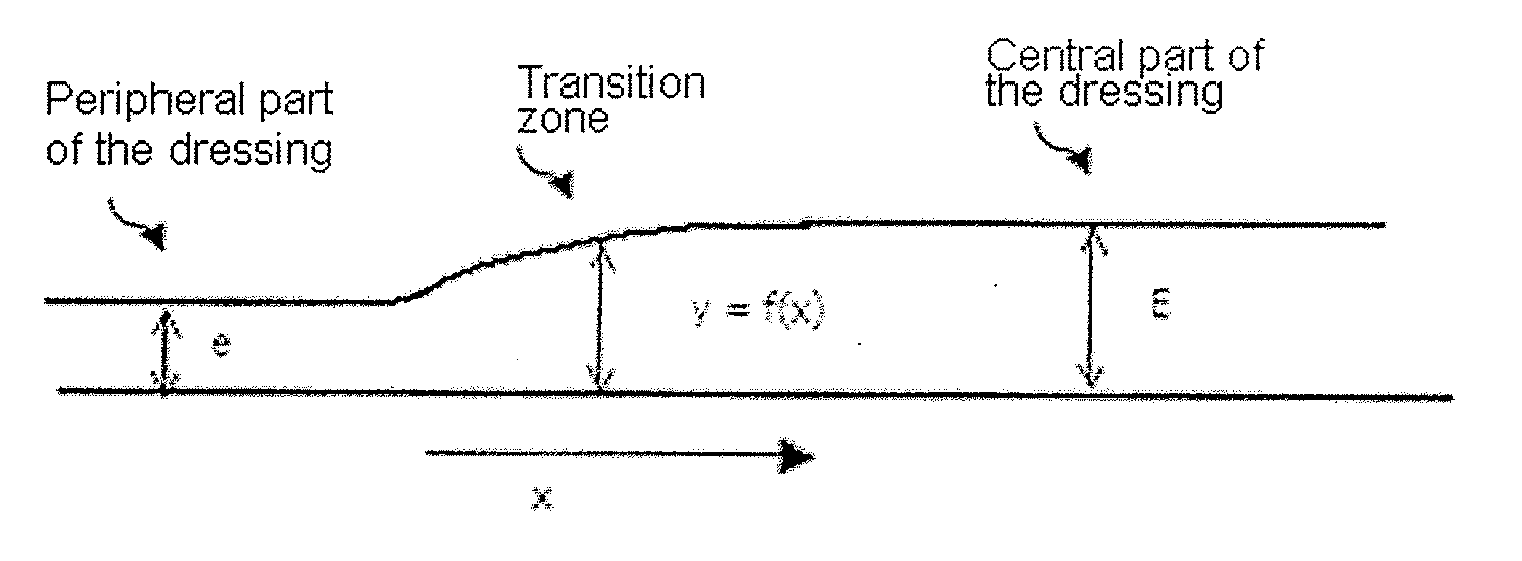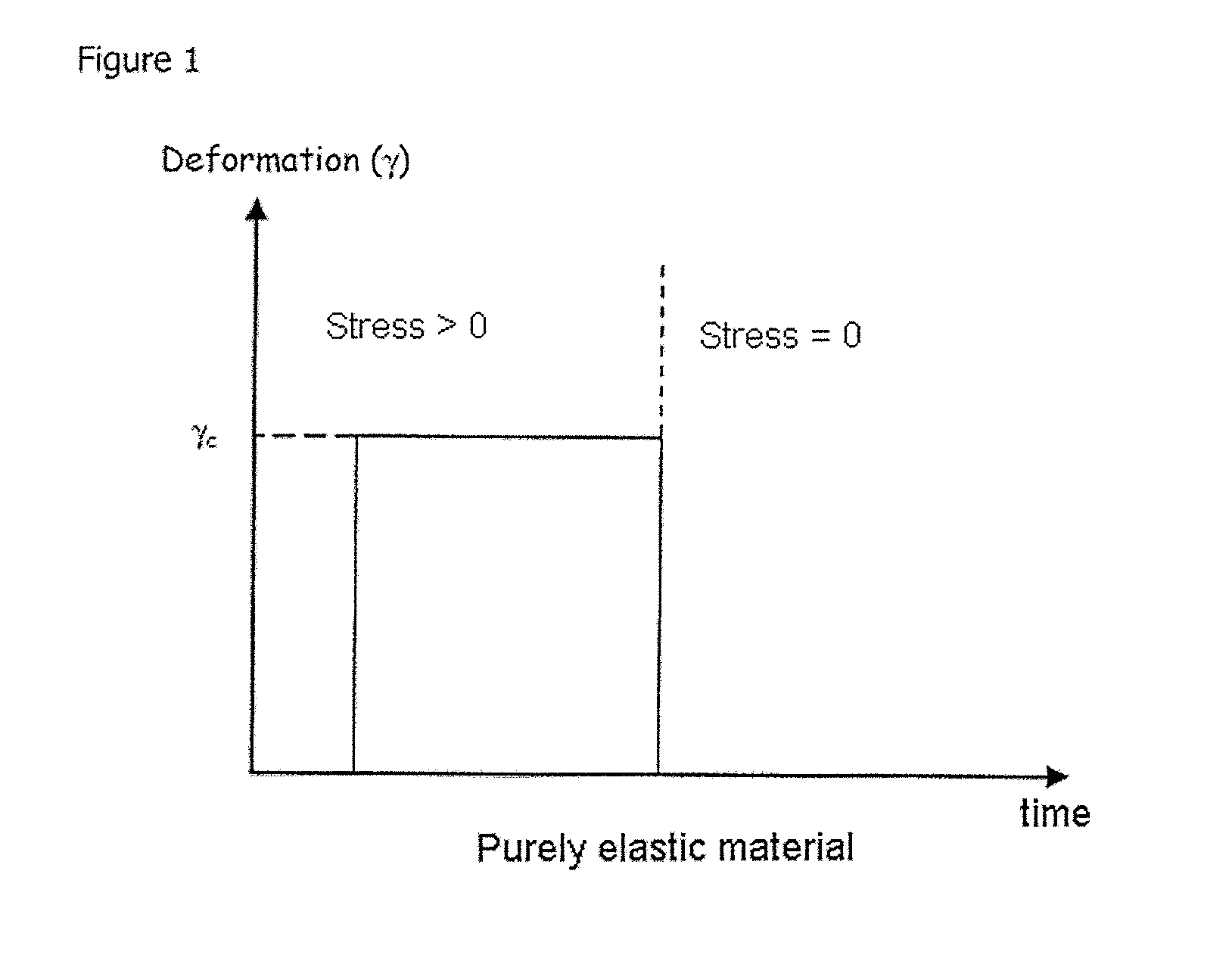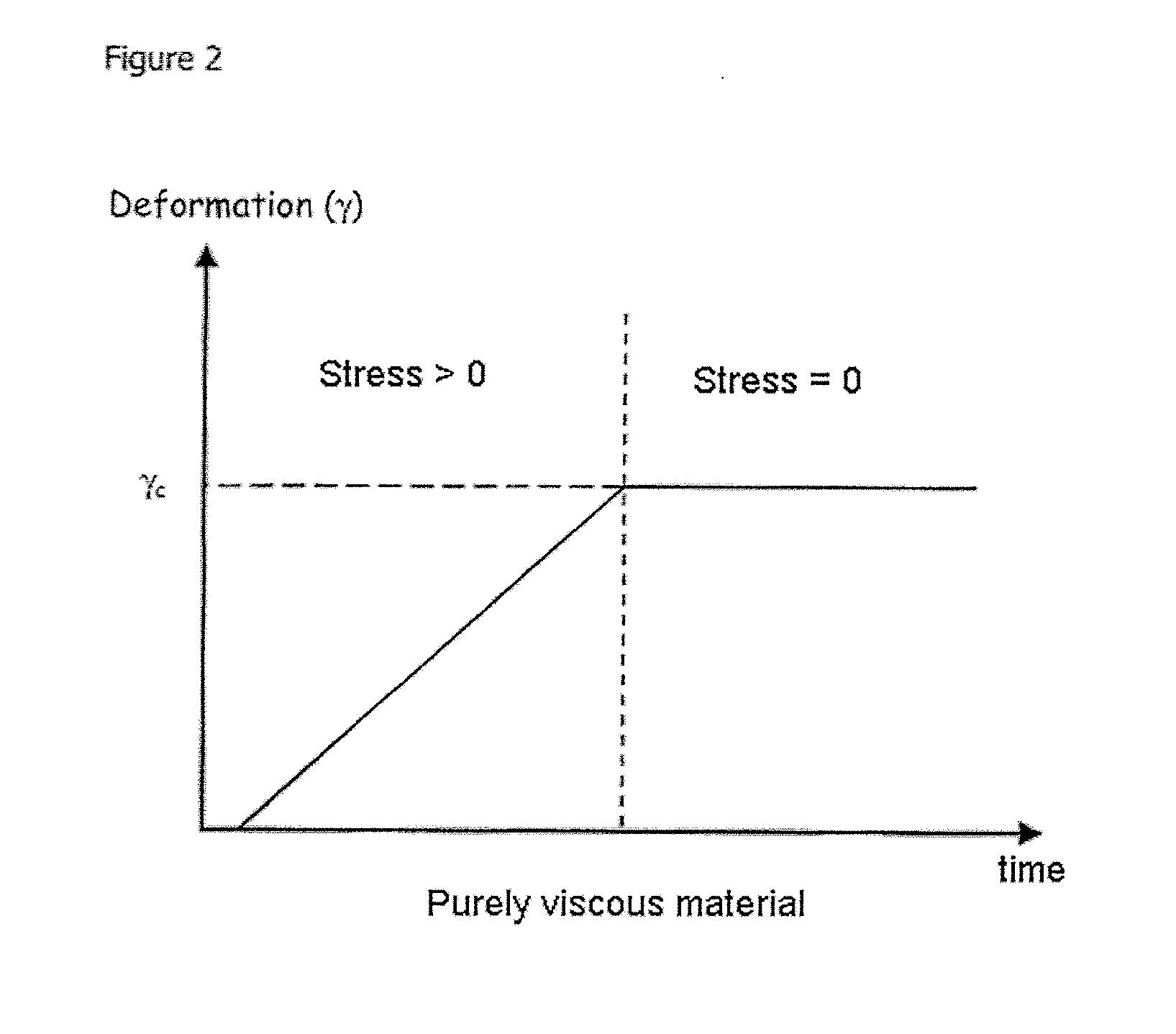Blister dressing including a hydrocolloid adhesive body
a technology of adhesive body and blister dressing, which is applied in the direction of dressings, synthetic polymeric active ingredients, bandages, etc., can solve the problems of painful undesirable residue of the adhesive mass on the skin, and difficulty in meeting the essence simultaneously, so as to improve facilitate the removal of the dressing, and facilitate the absorption of exudates
- Summary
- Abstract
- Description
- Claims
- Application Information
AI Technical Summary
Benefits of technology
Problems solved by technology
Method used
Image
Examples
example 1
of Formulation According to the Invention
[0127]A hydrocolloid adhesive mass consisting of the following compounds was prepared (amount expressed by weight per 100 grams of mass):
Amount (byweight perNo.Compounds100 grams)1Elastomer18.0Styrene-isoprene-styrene / styrene-isoprene blockcopolymer (sold under the name Kraton ® D 1111K by Kraton)2Plasticizer10.0Diethylhexyl adipate (sold under the nameCrodamol DOA by Croda)3Tackifying resin15.0Resin (sold under the name Arkon P 125 ® byArakawa)4Tackifying resin15.0Resin (sold under the name Arkon P 90 ® byArakawa)5Hydrocolloid41.0Carboxymethylcellulose (sold under the name CMCBlanose ® 7H4XF by Hercules)6Antioxidant0.5Zinc dibutyldithiocarbamate (sold under the namePerkacit ® ZDBC by the company Flexsys)7Antioxidant0.5Pentaerythritol tetrakis (3-(3,5-di(tert-butyl)-4-hydroxyphenyl)propionate) (sold under the nameIrganox ® 1010 by Ciba Speciality Chemicals)
[0128]This hydrocolloid adhesive mass was prepared by carrying out the following proces...
example 2
of Formulation According to the Invention
[0133]A hydrocolloid adhesive mass consisting of the following compounds was prepared (amount expressed by weight per 100 grams of mass):
Amount (byweight perNo.Compounds100 grams)1Elastomer18.0Styrene-isoprene-styrene / styrene-isoprene blockcopolymer (sold under the name Kraton ® D 1111K by Kraton)2Plasticizer10.0Diethylhexyl adipate (sold under the nameCrodamol DOA by Croda)3Tackifying resin30.0Resin (sold under the name Arkon P 125 ® byArakawa)4Hydrocolloid41.0Carboxymethylcellulose (sold under the name CMCBlanose ® 7H4XF by Hercules)5Antioxidant0.5Zinc dibutyldithiocarbamate (sold under the namePerkacit ® ZDBC by the company Flexsys)6Antioxidant0.5Pentaerythritol tetrakis (3-(3,5-di(tert-butyl)-4-hydroxyphenyl)propionate) (sold under the nameIrganox ® 1010 by Ciba Speciality Chemicals)
[0134]This hydrocolloid adhesive mass was prepared by carrying out the following process:
[0135]Compounds 1, 2, 5 and 6 were introduced into a Z-arm blender at...
PUM
| Property | Measurement | Unit |
|---|---|---|
| temperature | aaaaa | aaaaa |
| thickness | aaaaa | aaaaa |
| diameter | aaaaa | aaaaa |
Abstract
Description
Claims
Application Information
 Login to View More
Login to View More - R&D
- Intellectual Property
- Life Sciences
- Materials
- Tech Scout
- Unparalleled Data Quality
- Higher Quality Content
- 60% Fewer Hallucinations
Browse by: Latest US Patents, China's latest patents, Technical Efficacy Thesaurus, Application Domain, Technology Topic, Popular Technical Reports.
© 2025 PatSnap. All rights reserved.Legal|Privacy policy|Modern Slavery Act Transparency Statement|Sitemap|About US| Contact US: help@patsnap.com



